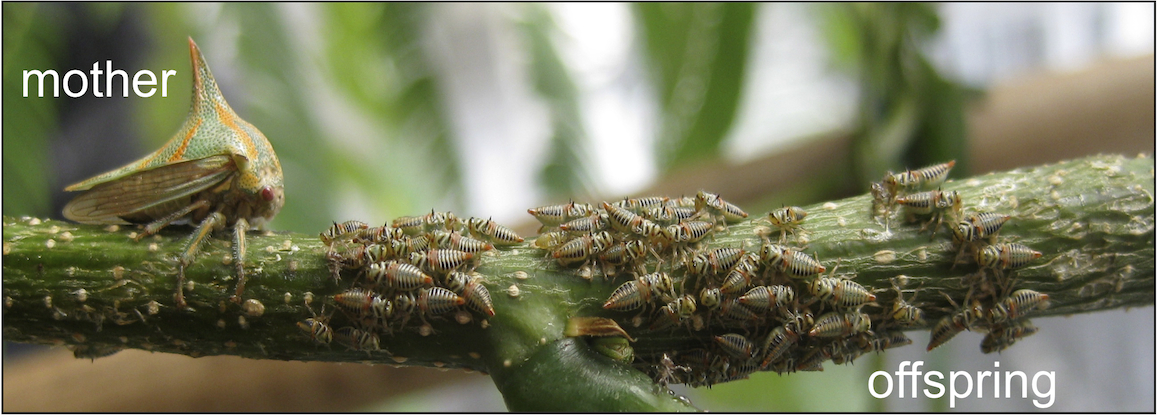Research
Functions of collective behavior —
Background — Group-living animals benefit from collective detection of predators, which greatly expands the sensory area of the individual.
However, false alarms are common and costly in many taxa. Group-living animals should limit false alarms, but there is a tradeoff between reducing
false alarms and failing to detect real predators. Additionally, within-group communication occurs within a broader communication network, one that
includes predators and parasitoids. Group-living animals should behave in ways that reduce the apparency of social signals to predators. I studied
this with two species of treehoppers (thornbug and oak treehoppers) during my doctoral work with R. Cocroft (U. Missouri).

These two species have similar life-histories, but key differences in signaling behavior. In both species, mothers and clustered offspring aggregations form sedentary family groups on tree branches (Fig. 2). Offspring repeatedly produce collective, substrate-borne vibrational signals when a predator attacks a juvenile in the group. Mothers respond to offspring group signals with defensive behavior. Mothers also produce vibrational signals during predator encounters, but the functions of those signals were unknown.

Results — I found that thornbug treehopper maternal signals reduce false alarms by signaling offspring after a predator attack (Hamel & Cocroft 2012), effectively functioning as negative feedback. I found that oak treehopper maternal signals silence offspring during predator attacks, and that at least one species of invertebrate predator is attracted by oak treehopper offspring signals, but not by maternal signals. This suggests that maternal signaling reduces the risk of attracting eavesdropping predators (Hamel & Cocroft, in preparation for Animal Behaviour).
Significance — My work with thornbug treehoppers is the first to show that negative feedback can reduce false alarms for collectively-behaving animals. My work with oak treehoppers is among very few studies suggesting that predator eavesdropping may be a source of selection on vibrationally-signaling animals. Together, these two studies represent more than one fourth of the available empirical data on how collectively-behaving animals use negative feedback.
